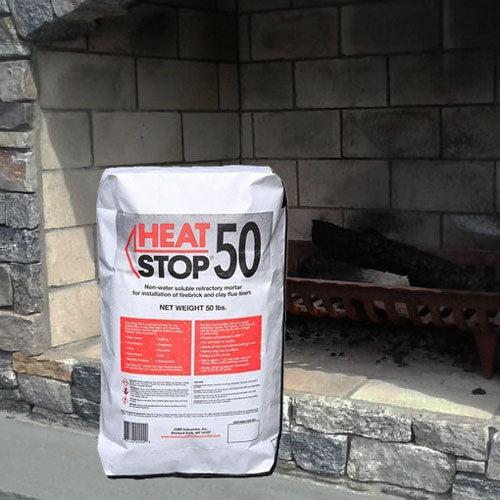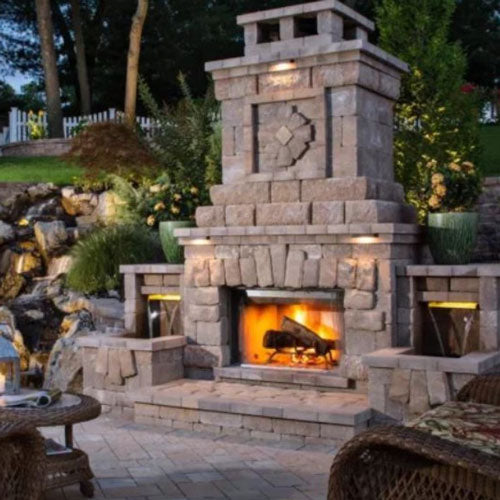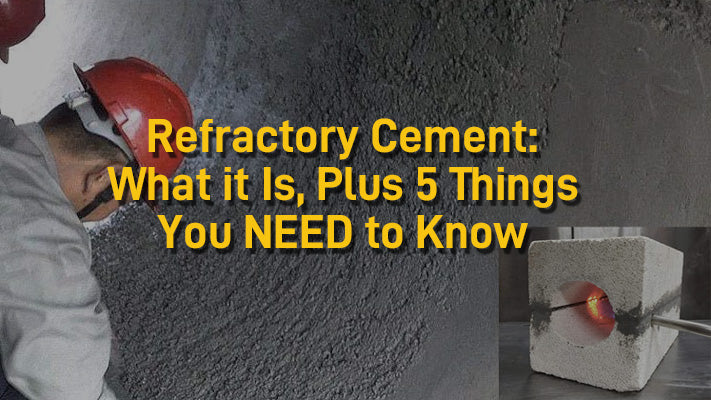What is Refractory Mortar?
Refractory mortar is a heat-resistant mixture of cement, sand, fireclay, and specialized additives like calcium aluminate, engineered to withstand temperatures up to 2,550–3,000°F (1,400–1,650°C). It’s used to bond firebricks, set clay flue liners, or coat (parge) surfaces in high-heat environments like fireboxes, kilns, forges, and industrial furnaces. Unlike standard mortar, which contains Portland cement and breaks down under extreme heat, refractory mortar maintains structural integrity and resists thermal shock
Where Is Refractory Mortar Used?
The simple answer would be chimneys and fireplaces. Using common sense, it's used anywhere that is exposed to very high temperatures. There have been failures in parts of the chimney and fireplace firebox because someone did not use the right kind of mortar for the application.
The National Fire Protection Association or NFPA is a self-funded nonprofit organization that was established in 1896. They recommend the use of tested, medium-duty refractory cement in the construction of fireplace fireboxes, in coating smoke chambers, and in the setting of clay flue liners. They also recommend cement and its agents be non-water-soluble and this is where calcium aluminate comes into play. The calcium aluminate binder will be set hydraulically which will meet the requirements. Without calcium aluminate, or something similar, someone will build a chimney, and even after it cures, it's exposed to moisture, so the joints will soften and wash out.
Heat Stop 50 Refractory Mortar
If you have a well-designed masonry fireplace or a bake oven, you will add value to your home along with charm and needed warmth in the winter months. Studies have shown that masonry fireplaces are no the top of the list among home buyers. If you are considering adding a fireplace to your home, you need to ensure it's designed and installed properly.
Key Components:
Heat Stop 50, a high-temperature refractory mortar, contains sand, cement (specifically calcium aluminate cement), and fireclay as key components, along with carefully selected aggregates and additives designed for heat resistance. Here’s a detailed breakdown based on available information:
- Sand: Heat Stop 50 includes fine aggregates, which are typically silica-based sand, to provide structure and workability. The sand is part of the carefully selected aggregate blend that ensures the mortar does not expand or tear apart when heated. The exact grain size and quality are optimized for thin joints (1/16” to 1/8”, up to 3/8” for thicker applications)
- Cement: This refractory mortar uses calcium aluminate cement (instead of Portland Cement) as its primary binder. This hydraulic-setting cement is critical for its non-water-soluble properties and ability to withstand temperatures up to 2,500°F, meeting ASTM C-199 medium-duty standards. Calcium aluminate ensures the mortar sets chemically with water, providing a strong, heat-resistant, and acid-resistant bond suitable for fireplaces, chimneys, and ovens.
- Fireclay: Heat Stop 50 incorporates fireclay, a heat-resistant clay that can endure temperatures up to 2,732°F. Fireclay enhances the mortar’s thermal stability and contributes to its refractory properties, making it ideal for bonding firebricks and clay flue liners in high-heat environments like masonry ovens and fireplaces.
- Additional Additives: The product contains proprietary additives to improve acid resistance, workability, and thermal shock resistance. These are not detailed in public specifications but are described as carefully selected to ensure performance under extreme heat and to prevent cracking or expansion during thermal cycling.










